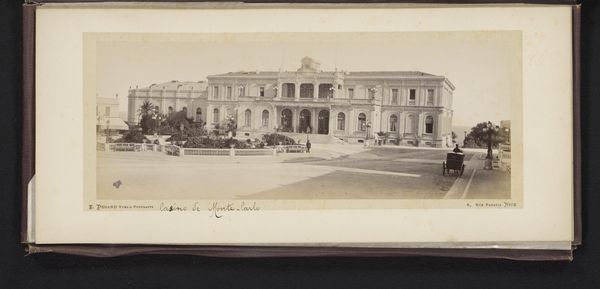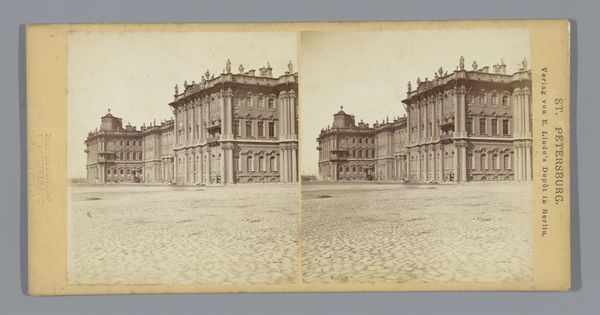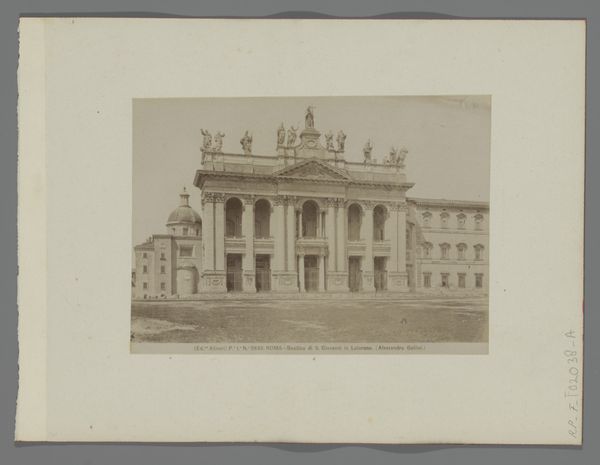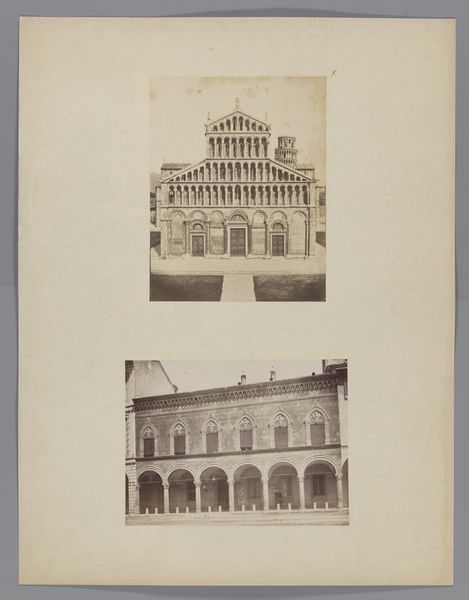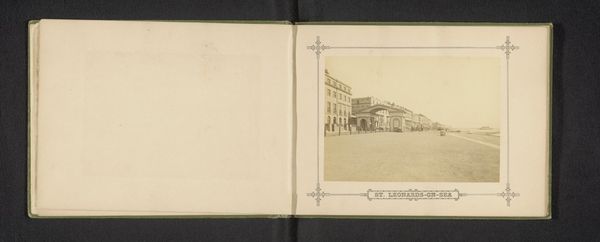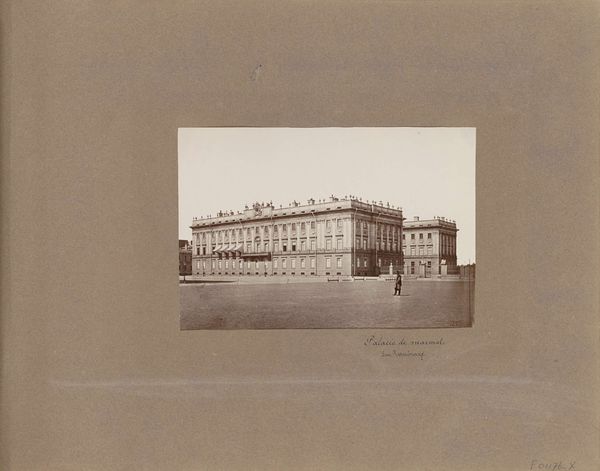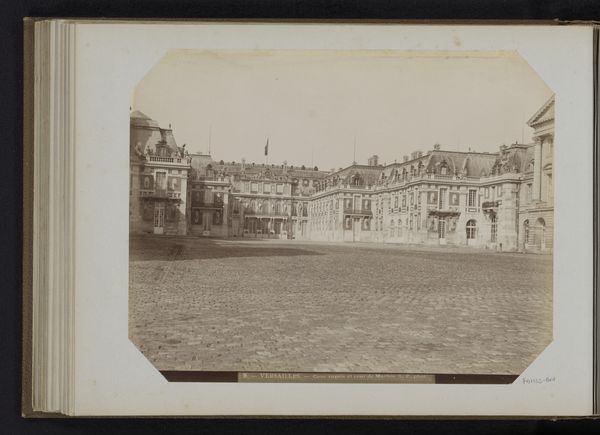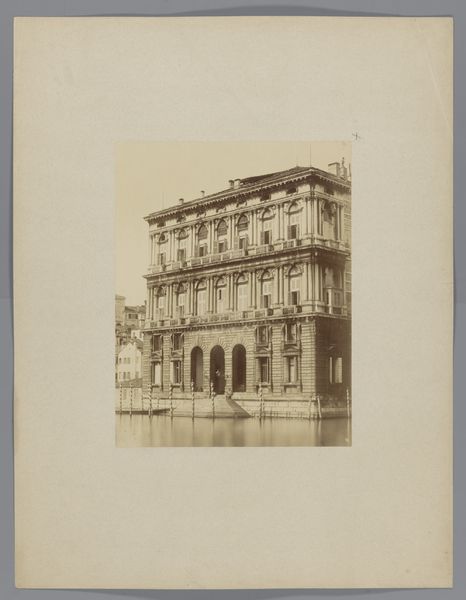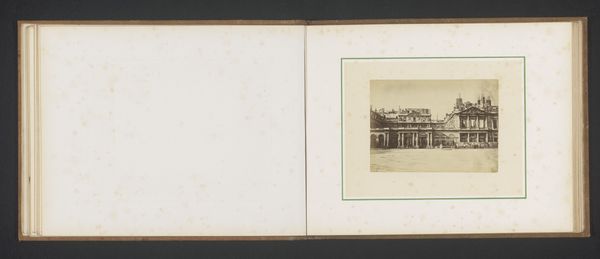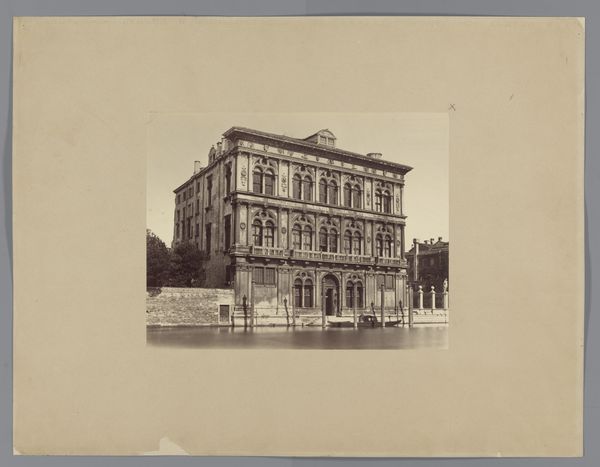
Dimensions: height 152 mm, width 202 mm
Copyright: Rijks Museum: Open Domain
Curator: Here we have an albumen print titled "Quirinal Palace, Rome," dating from around 1890 to 1900, attributed to Samuel J. Beckett. Editor: It has this incredibly staged and almost vacant atmosphere. Despite the grand architecture, it feels deserted, like a set awaiting actors. The starkness is interesting; is that deliberate, or just a product of the photographic techniques of the time? Curator: Both, perhaps. Albumen prints often possess that ethereal quality due to their process, but the composition clearly emphasizes the palace’s imposing grandeur, harking back to the aspirations of neoclassical Rome. Notice the meticulous detail afforded to every column, every statue... it echoes the symbols of power meticulously maintained across generations. Editor: That's interesting because, framed in its time, I think this image could be viewed as a carefully constructed narrative intended to bolster nationalistic sentiment and convey ideas of permanence and control, even empire, through architectural might. I wonder who the target audience would have been at this time? Curator: Most likely, affluent tourists who desired to collect images to solidify their experience and bring cultural capital home with them. Each photograph acted as a powerful reminder, reinforcing the weight of European culture. The Quinal Palace itself carried layered meanings; as a papal residence before Italian unification, it held strong implications of spiritual power but would come to be linked with the power of the Kingdom of Italy in the later 19th century. Editor: Right, but that transition in symbolism is not neutral; in fact, it speaks to the messy power dynamics of a young Italian nation building itself ideologically. Does this picture celebrate a reclamation, a reinvention, or even the violence inherent in the nation-state building itself? Curator: Perhaps all of that is implicit within the image itself— it has that quality of presenting layered meanings. But, visually, what remains powerful is the image of the eternal city, framed as enduring, resilient. Editor: Absolutely. I think understanding art is not only understanding that past and how the work signifies in relation to dominant powers of the time. Thank you for that cultural reminder. Curator: The pleasure was mine, seeing the image through such engaged eyes. It's an invitation to contemplate how history echoes—or haunts—the present.
Comments
No comments
Be the first to comment and join the conversation on the ultimate creative platform.
